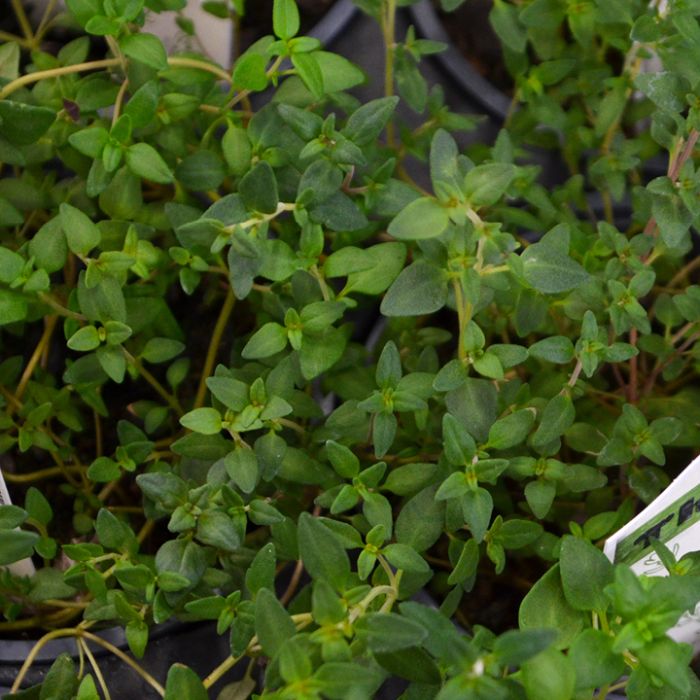Creating a Rock Garden
When creating a rock garden, you want to choose plants that can grow between rocks. The experts at Gertens offer some helpful tips and tricks on how to build a successful rock garden!



Common Thyme is a perennial herb that is commonly grown for its edible qualities, although it does have ornamental merits as well. The tiny fragrant round grayish green leaves can be harvested at any time in the season. The leaves have a savory taste and a pleasant fragrance.
When you see the Gerten Grown logo on our annuals, you know you're getting a fresh plant directly from our greenhouse. We've been perfecting our growing process for over four generations and pride ourselves on providing local quality and freshness to our customers. Better pricing on better quality plant material, that's Gerten Grown.
Plant Height: 6 inches
Flower Height: 8 inches
Spacing: 18 inches
Sunlight: ![]()
Hardiness Zone: 3a
Other Names: English Thyme
Edible Qualities
Common Thyme is a perennial herb that is commonly grown for its edible qualities, although it does have ornamental merits as well. The tiny fragrant round grayish green leaves can be harvested at any time in the season. The leaves have a savory taste and a pleasant fragrance.
The leaves are most often used in the following ways:
Features & Attributes
Common Thyme is smothered in stunning clusters of pink flowers at the ends of the stems from early to mid summer. Its attractive tiny fragrant round leaves remain grayish green in color throughout the year.
This is a dense herbaceous evergreen perennial herb with a spreading, ground-hugging habit of growth. It brings an extremely fine and delicate texture to the garden composition and should be used to full effect. This plant will require occasional maintenance and upkeep, and is best cleaned up in early spring before it resumes active growth for the season. Deer don't particularly care for this plant and will usually leave it alone in favor of tastier treats. Gardeners should be aware of the following characteristic(s) that may warrant special consideration;
Aside from its primary use as an edible, Common Thyme is sutiable for the following landscape applications;
Planting & Growing
Common Thyme will grow to be only 6 inches tall at maturity extending to 8 inches tall with the flowers, with a spread of 24 inches. When grown in masses or used as a bedding plant, individual plants should be spaced approximately 18 inches apart. Its foliage tends to remain low and dense right to the ground. It grows at a fast rate, and under ideal conditions can be expected to live for approximately 10 years.
This plant is quite ornamental as well as edible, and is as much at home in a landscape or flower garden as it is in a designated herb garden. It should only be grown in full sunlight. It prefers to grow in average to dry locations, and dislikes excessive moisture. It is considered to be drought-tolerant, and thus makes an ideal choice for a low-water garden or xeriscape application. It is not particular as to soil type or pH. It is highly tolerant of urban pollution and will even thrive in inner city environments. Consider covering it with a thick layer of mulch in winter to protect it in exposed locations or colder microclimates. This species is not originally from North America. It can be propagated by division.
| Gerten Grown Plants | Gerten Grown Plants |
|---|---|
| Common Family Name | Herbs |
| Sun Preference | Full-Sun, Part-Sun |
| Plant Life Cycle | Annual |